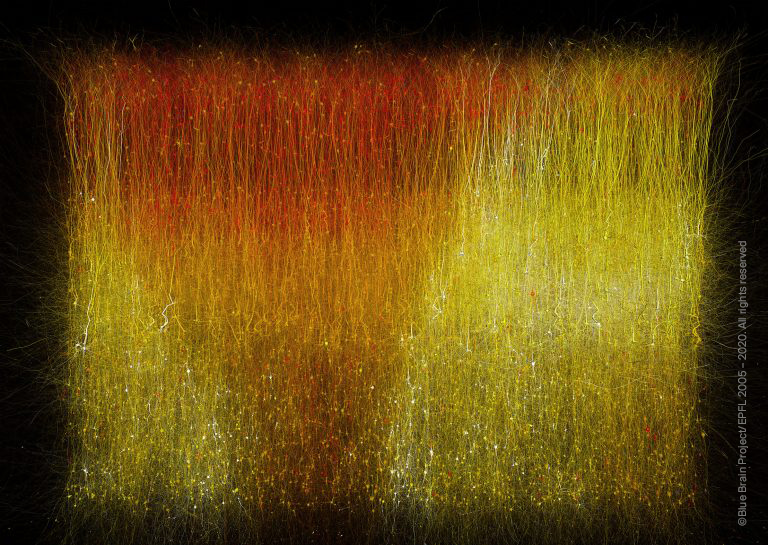
Digital reconstructions of brain tissue represent a snapshot of the anatomy and physiology of the brain at one moment in time.
Blue Brain Project simulations use mathematical models of individual neurons and synapses to compute the electrical activity of the network as it evolves over time. This requires a huge computational effort, only possible with large supercomputers. Simulations of larger volumes of tissue, at ever higher levels of detail, will need ever more powerful computing capabilities.
The Blue Brain uses its digital reconstructions as the basis for a potentially unlimited range of simulations, each representing an in silico experiment. Researchers can measure the spontaneous electrical activity of the virtual tissue, apply stimulation protocols and measure the response, and manipulate the tissue in various ways (e.g. by “knocking out” cells with particular characteristics, by “lesioning” part of the circuit). In silico experiments can replicate past laboratory experiments – an important test for the reconstructions – or can explore new ground and suggest new experiments. In particular, simulation allows experiments that would be difficult or impossible in biological tissue or in living animals – for instance, experiments requiring simultaneous measurements from large numbers of neurons.
Such experiments provide a new tool for researchers seeking to understand the causal relationships between events at different levels of brain organization. – for example, understanding on how changes in composition of the extra-cellular fluid (which impact the activity of synapses) affect the overall pattern of activity in the virtual tissue. As digital reconstructions become larger, more detailed and more biologically accurate, the range of experiments they enable will grow.